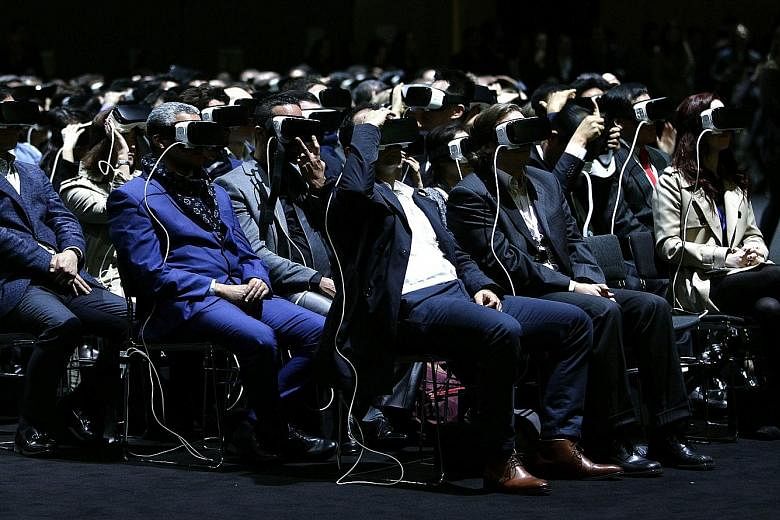With smartphone sales slowing down globally, many handset makers have started to diversify their offerings to win over consumers.
This was especially apparent at last week's Mobile World Congress in Barcelona, where many companies focused not just on releasing high-powered flagship phones but also on crafting a cohesive ecosystem around these devices.
They showed off a smorgasbord of smartphone add-ons and companion gadgets, including home monitoring systems, interactive earpieces, 360 cameras and virtual reality (VR) headsets.
While there were several big releases over the four-day congress, LG stole the show with a whole catalogue of inventions which the company dubbed LG Friends.
From the spherical Rolling Bot camera reminiscent of Star Wars' BB-8 droid, to a hi-fi add-on created with audio company Bang & Olufsen, the Korean company showed off its holistic vision of a future where everything is connected.
Samsung also stepped up to the plate with the Gear 360, a 360 camera to complement its Gear VR virtual reality headset.
Sony showcased three new concept products - a camera, projector and all-in-one concierge device - and HTC finally confirmed that its virtual reality Vive headset will be released in early April.
This shift towards making a smartphone more than a standalone device is due mainly to manufacturers looking to diversify in an increasingly competitive market that is becoming more saturated.
According to the International Data Corporation Worldwide Quarterly Mobile Phone Tracker, 2015 saw only 10.1 per cent growth, compared to 27.5 per cent in 2014, with a total of 1.43 billion units shipped last year.
Mr Ronan de Renesse, lead analyst of consumer technology at research firm Ovum, said companies are looking to create new sources of revenue.
"The announcements will increase customer awareness of these new device segments," he said. "They reflect an attempt by manufacturers to offset stagnating smartphone sales."
Examples of such technology include augmented and virtual reality, flexible displays, Internet of Things and biometric sensors, according to Mr Anshul Gupta, research director at Gartner.
Ms Julie Ask, vice-president and principal analyst at research firm Forrester, said that "companies are looking for the next thing consumers will buy".
However, the impact of all these connected products will not be seen immediately, but over three to four years, she said. "These connected products in the market suffer from still being expensive, and lacking an open ecosystem that easily integrates all of the services the customer loves."
She also cited difficulty of use and a lack of indispensable features as other factors which will limit growth of this segment.
In Singapore, such devices are likely to become more and more common as the technology behind them improves, and more content for them becomes available.
Mr Kenneth Liew, senior research manager at International Data Corporation Asia/Pacific, said: "Wearables are already starting to gain strong traction in Singapore, and this will continue to grow as smartwatches get better. VR goggles will likely be the next wave, as the developer community matures and more more VR content becomes readily available."

